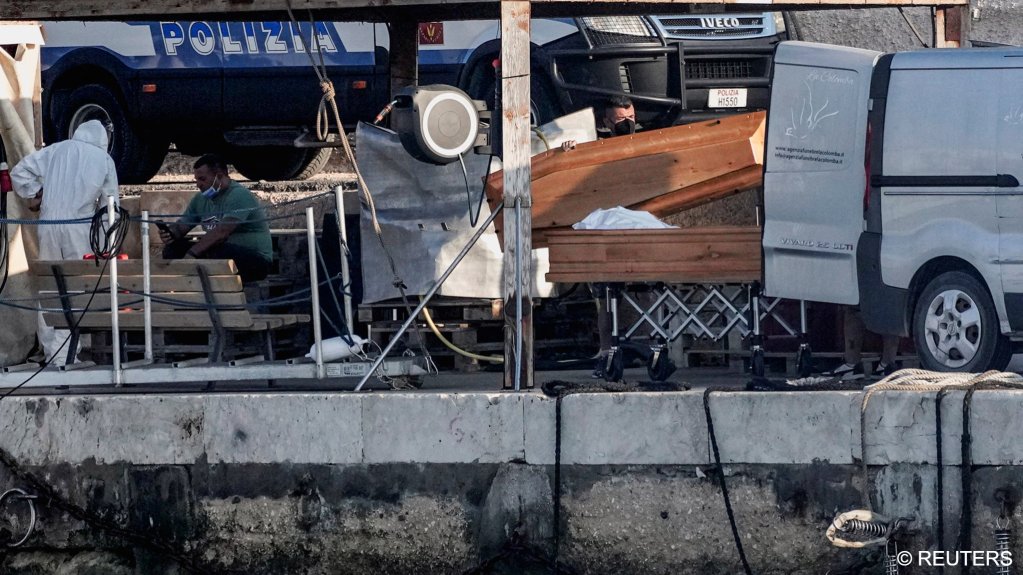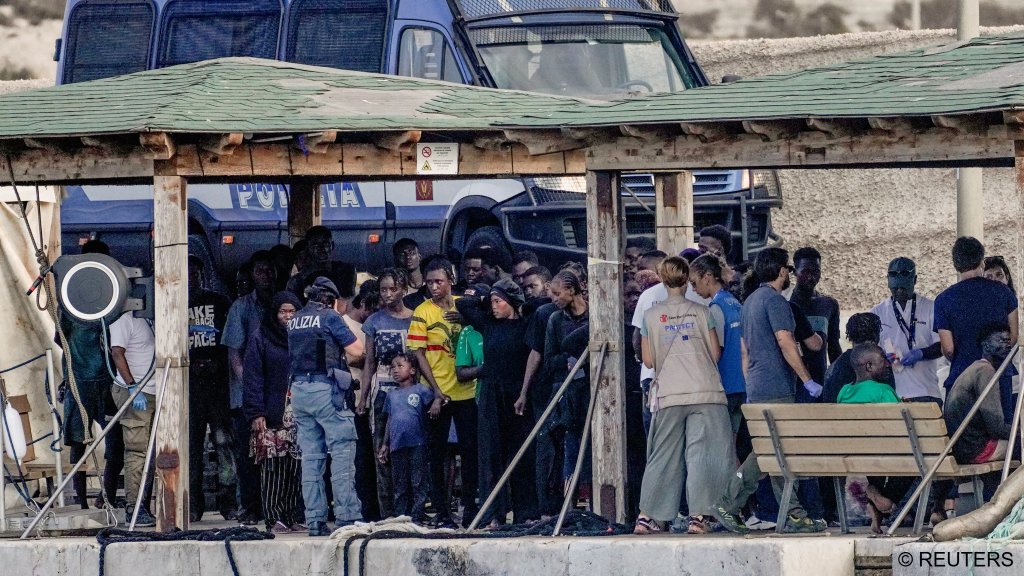Sixty migrants were rescued, but at least 27 migrants have died after two boats capsized off the Italian island of Lampedusa on Wednesday afternoon. The final death toll could continue to rise, says the Italian Coast Guard.
There is "deep anguish over yet another shipwreck off the coast of Lampedusa, where UNHCR is now assisting the survivors," wrote UN Refugee Agency UNHCR spokesperson Filippo Ungaro on the social media platform X on Wednesday (August 13).
The bodies of a baby, three adolescents and two women were among those recovered by coast guards, according to the Italian news agency ANSA. The incident took place in the Italian search and rescue zone (SAR).
Nationals from Pakistan, Somalia and Sudan were on board the boats, stated ANSA.
More people are still missing, confirmed Ungaro. The two migrant boats had set off from Libya in the early hours of Wednesday (August 13) and were about 14 nautical miles (26 kilometers) off Lampedusa when the boats capsized. They are thought to have been carrying nearly 100 people.
Ungaro told the news agency Associated Press (AP) that from survivor accounts, they believed there were between 92 and 97 people on board the boats before they capsized.
Read AlsoSeveral shipwrecks in Mediterranean Sea result in dead and missing
Survivors 'exhausted' and 'in shock'
One of the boats began to sink, which caused those on board to try and transfer to the other boat, which then also capsized. A picture taken by the Italian Coast Guard shows some people sitting on top of the overturned hull of one of the boats and others clinging to life jackets or buoyancy aids.
The UN Migration Agency IOM’s spokesperson Flavio Di Giacomo said when one of the two vessels started to take on water, people began transferring to the other boat, which was made of fiberglass. And the overloading caused the second boat to flip over, too.
A helicopter from Italy’s border and financial police Guardia di Finanza, which assists search and rescue operations at sea, came across the accident around midday, reported the German press agency dpa and the Italian news agency ANSA. They raised the alarm and ships were sent towards the accident site.

The Italian Red Cross, which helped treat survivors once they were brought to shore, said that 56 men and four women survived the incident. They were described as "exhausted" and "in shock" but in a stable condition once they reached land. Four people were taken for medical checks in hospital, stated ANSA. The rest were brought to the first reception 'hotspot' at Contrada Imbriacola on the island of Lampedusa.
Read AlsoRahim's tale: 'In Libya we spent 14 horrible months'
'This was a disaster just waiting to happen'
On Wednesday, a statement from the Italian Coast Guard (Guardia Costiera) said that search and rescue operations were ongoing. At least five ships from the coast guard and the financial and border police, as well as vessels from the EU border agency Frontex, took part in the search. Helicopters and planes were also mobilized. The coast guard added in a statement that the death toll was "provisional and being updated."
Francesca Saccomandi, who was assisting some of the survivors as part of her work with Mediterranean Hope, an organization under the umbrella of Protestant Churches in Italy, said she had spoken to one woman who said she had lost her husband and little girl in the incident. Another young woman said she had lost her two younger sisters. "Lots of them said they had drunk a lot of salt water," Saccomandi told ANSA.

"This was a disaster just waiting to happen," continued Saccomandi. "People keep setting off and only the lucky ones manage to arrive. Others, like today, will lose their lives. The deaths should be placed at the door of European government policies, who are just pushing the problem elsewhere instead of addressing it head-on. These deaths are the consequences of these policies and they are also destroying the dignity and values that Europe stands for."
Italian politicians urge tougher sanctions against smugglers
Italy’s Interior Minister Matteo Piantedosi wrote on X that the incident once again demonstrated "how urgent it is to prevent dangerous sea voyages in the departure zones and to relentlessly combat the unscrupulous human trafficking that fuels this phenomenon."
Giorgia Meloni, Italy’s Prime Minister, expressed sorrow and sympathy for those who lost their lives and criticized the human traffickers for their "inhuman cynicism" after organizing these dangerous journeys. She also underlined Italy’s tough stance against smuggling gangs.
Deaths en route
According to Ungaro, at least 675 people have lost their lives on the central Mediterranean route between North Africa and Italy since the beginning of the year. In the last decade, almost 24,500 people have lost their lives or gone missing on that route, confirmed the IOM's Missing Migrants Project.
According to Italian government data, 38,263 people have made the crossing to Italy in small boats since the beginning of the year. The data was last updated on the morning of August 13.
Just last week, three people went missing after jumping off a metal boat that had departed from Tunisia. The three, according to survivors assisted by the UNHCR, had jumped into the water in desperation when they saw a passing boat. After three days at sea, according to UNHCR spokesperson Ungaro, the 53 on board, including ten minors, had run out of petrol, food and water.
The deadliest shipwreck on the Central Mediterranean route to date took place in 2013 off Lampedusa, when a boat carrying over 500 migrants from Eritrea, Somalia and Ghana caught fire and capsized. At least 368 people died in that disaster. The tragedy is still commemorated every year on Lampedusa.
With dpa, ANSA, AP, Reuters, and AFP
Read AlsoEU urges Libya to combat Mediterranean migrant sea crossings
This story was updated on Friday, August 15 to include the increased confirmed death toll, which has risen from 26 to 27. According to accounts from survivors and the numbers of people thought to be missing, the death toll from these shipwrecks could rise further.
